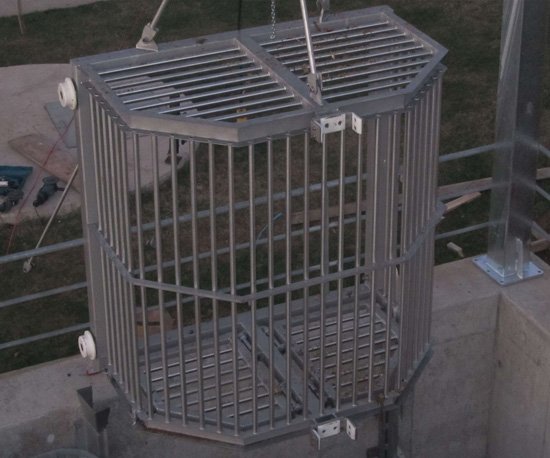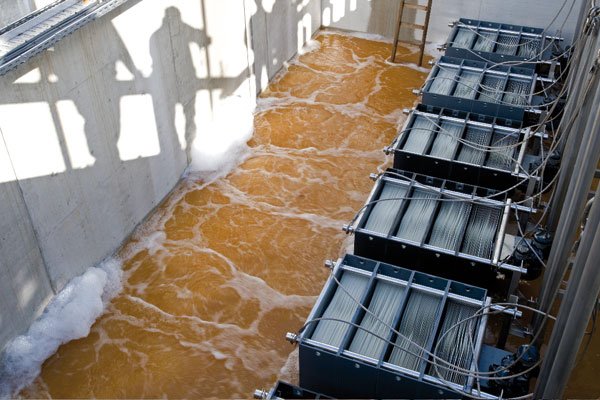
Wastewater Treatment Exam
Comprehensive Guide to Wastewater Treatment: Examining the Future of Water Sustainability
Introduction
In an era where water scarcity is becoming increasingly prevalent, effective wastewater treatment has emerged as a pivotal concern for municipalities, industries, and environmental advocates alike. Wastewater treatment plays a vital role in safeguarding public health, preserving ecosystems, and promoting sustainable water practices. According to the United Nations, around 2.2 billion people globally lack access to safely managed drinking water, compounding the urgency for improved wastewater management strategies. This article provides an in-depth examination of wastewater treatment, emphasizing its significance, methodologies, challenges, and future opportunities.
Section 1: Understanding Wastewater Treatment
1.1 What is Wastewater?
Wastewater is any water that has been adversely affected in quality by anthropogenic influence. It includes residential, commercial, and industrial effluents that typically contain a range of pollutants such as organic matter, pathogens, and heavy metals. According to recent industry analyses, municipal wastewater treatment facilities in the U.S. handle approximately 34 billion gallons of wastewater daily, reflecting the critical need for robust treatment processes.
1.2 Importance of Wastewater Treatment
Wastewater treatment is essential for several fundamental reasons:
-
Public Health Protection: Untreated wastewater poses significant health risks due to the potential spread of waterborne diseases. The World Health Organization (WHO) estimates that more than 1.5 million children under five die from diarrhea every year, largely attributed to unsafe drinking water and inadequate sanitation.
-
Environmental Conservation: Proper treatment prevents pollutants from entering natural waterways, thereby protecting aquatic ecosystems and maintaining biodiversity. An estimated 80% of the world’s wastewater is discharged untreated, severely impacting terrestrial and aquatic habitats.
- Resource Recovery: Modern wastewater treatment plants have evolved from merely disposing of waste to recovering valuable resources. Innovations in biogas production and nutrient recovery can contribute to energy generation and fertilizers, respectively.
Section 2: Wastewater Treatment Process Overview
The wastewater treatment process can be broadly categorized into three main stages: primary, secondary, and tertiary treatment.
2.1 Primary Treatment
Primary treatment involves physical methods to remove large solids from wastewater. Key processes include:
-
Screening: Bars and screens are used to filter out large debris like plastics and organic material.
- Sedimentation: Wastewater is held in large tanks where solids settle, forming sludge. According to EPA statistics, primary treatment can remove about 60% of suspended solids and 30% of biochemical oxygen demand (BOD) from wastewater.
2.2 Secondary Treatment
This stage employs biological processes to further decompose organic matter. Common techniques include:
-
Activated Sludge Process: Aerobic bacteria consume organic matter, facilitated by aeration tanks that inject air into the mixture. Research published in leading environmental engineering journals indicates that this method can achieve a 90% reduction in BOD.
- Membrane Bioreactors (MBRs): MBRs combine biological treatment with membrane filtration, resulting in higher effluent quality.
2.3 Tertiary Treatment
Tertiary treatment focuses on the removal of specific contaminants and often involves advanced processes such as:
-
Chemical Treatment: The introduction of coagulants for phosphorus removal through precipitation.
- Filtration and Disinfection: Techniques like sand filtration, UV radiation, or chlorination are utilized to eliminate pathogens, allowing for the safe release or reuse of treated water.
Section 3: Challenges in Wastewater Treatment
Despite advancements, wastewater treatment facilities face several challenges:
3.1 Aging Infrastructure
Many facilities operate with outdated equipment, resulting in inefficiencies and increased risks of contamination. A report by the American Society of Civil Engineers (ASCE) suggests that a significant portion of U.S. wastewater infrastructure requires urgent upgrades, estimated to require $271 billion over the next two decades.
3.2 Regulatory Compliance
Facilities must navigate complex regulations set forth by governing bodies such as the EPA. Non-compliance can result in severe penalties and environmental repercussions. Ongoing education and training are vital for managers to stay current with regulatory changes.
3.3 Resource Limitations
Tight budgets can limit operational capabilities, affecting both maintenance and future upgrades. A survey by the National Association of Clean Water Agencies (NACWA) found that 68% of water utility managers cite funding as their greatest concern.
Section 4: Innovations in Wastewater Treatment
Innovation is reshaping wastewater treatment practices, focusing on efficiency, sustainability, and resource recovery.
4.1 Decentralized Treatment Systems
Decentralized systems treat wastewater close to its source, reducing the need for extensive piping. This localized approach can lower costs and protect local water bodies from effluent contamination.
4.2 Zero Liquid Discharge (ZLD)
ZLD aims to eliminate wastewater discharge entirely, ensuring all solids and liquids are recovered and reused. Pilot projects demonstrate that this strategy not only conservatively uses water but also reduces environmental footprints.
4.3 Smart Water Technology
The integration of IoT (Internet of Things) technology enables real-time monitoring and management. Facilities that adopt smart technologies report improved operational efficiency, reduced energy usage, and enhanced compliance with effluent standards.
Key Questions and Answers
Q1: What types of pollutants are common in wastewater?
A1: Common pollutants include organic matter, pathogens, heavy metals, nutrients (like nitrogen and phosphorus), and pharmaceuticals.
Q2: How can I ensure my facility is compliant with regulatory standards?
A2: Conduct regular audits, invest in employee training, and establish a continuous monitoring system to ensure compliance with local and federal regulations.
Q3: What are the prospects for the future of wastewater treatment?
A3: The future lies in enhanced resource recovery, energy efficiency, and reliance on advanced monitoring technologies, ultimately driving a more sustainable approach to water management.
Conclusion
Wastewater treatment is not merely a technical necessity; it is a cornerstone of public health and environmental sustainability. The challenges faced by wastewater treatment facilities are significant, but with innovative solutions and a commitment to modernizing infrastructure, we can enhance the efficacy and resilience of water treatment systems. By embracing new technologies and practices, stakeholders can pave the way for a sustainable future where wastewater is not seen merely as a waste product, but as a valuable resource.
As we look ahead, continuous research, community engagement, and policy support will be essential in revolutionizing wastewater management practices for the benefit of society and our planet. Ensuring comprehensive understanding and adherence to evolving standards will empower facility managers and environmental professionals to tackle the wastewater treatment challenges of tomorrow effectively.

